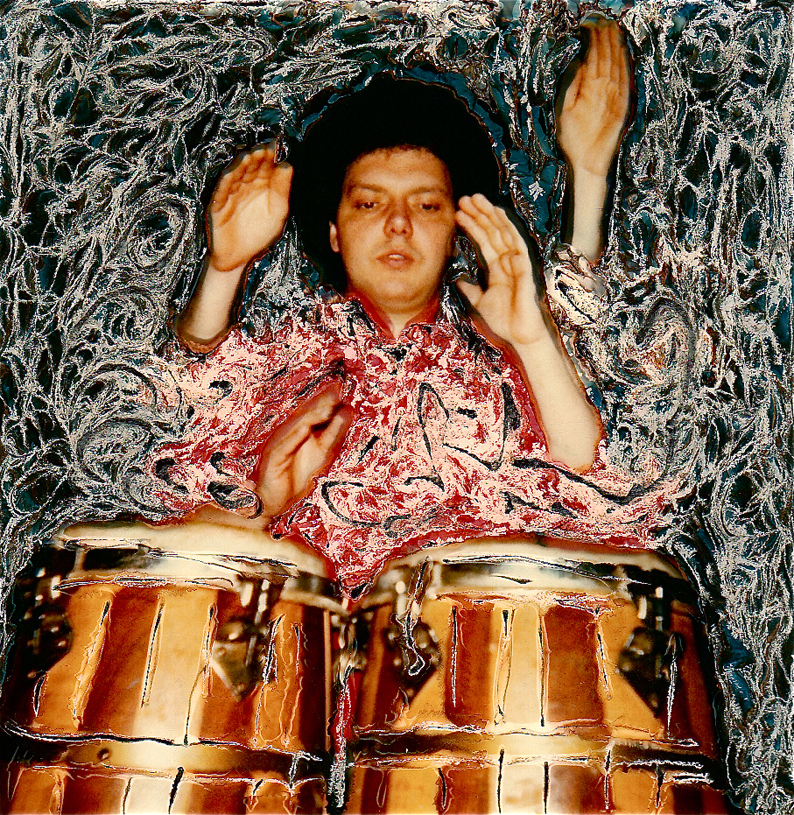Polaroid art on:
[Wikipedia]
[Google]
[Amazon]
Polaroid art is a type of alternative photography which consists of modifying an instant picture, usually while it is being developed. The most common types of Polaroid art are the emulsion lift, the Polaroid transfer and SX-70 manipulation.
 SX-70 manipulation is used to modify
SX-70 manipulation is used to modify
Polaroid SX-70 Art
gallery Photography by genre
Emulsion lift
An emulsion lift, or emulsion transfer, is a process used to remove thephotographic emulsion
Photographic emulsion is a light-sensitive colloid used in film-based photography. Most commonly, in silver-gelatin photography, it consists of silver halide crystals dispersed in gelatin. The emulsion is usually coated onto a substrate of g ...
from an instant print by introducing it in warm water. The emulsion can then be transferred to another material, such as glass, wood or paper. It can also be folded, ripped or otherwise customized as desired. This technique can be performed on peel-apart film and Polaroid Originals
Polaroid B.V. (trading as Polaroid) is a Dutch photography company that manufactures instant film for its original cameras as well as for select Polaroid Corporation instant cameras.
Polaroid B.V. was founded in 2008 as The Impossible Project ...
integral film, but not on Fujifilm Instax film. The procedure to do an emulsion lift involves, for integral type film, cutting off the picture's border, separating the negative layer from the positive layer and submerging the positive layer in warm water. The emulsion will start to become free from the plastic layer and it will float on the water. While it is still wet, it can be placed in another material and shaped. When done with Fujifilm FP-100C, the picture is placed in water near the boiling point and then submerged in cold water. This will release the emulsion, which resembles cellophane
Cellophane is a thin, transparent sheet made of regenerated cellulose. Its low permeability to air, oils, greases, bacteria, and liquid water makes it useful for food packaging. Cellophane is highly permeable to water vapour, but may be coated w ...
and is harder to manipulate than Polaroid emulsions.
Polaroid transfer
A Polaroid transfer, sometimes known as an image transfer, is a technique used to develop a peel-apart film picture on to a different material, like drawing paper. In a Polaroid transfer, the image is peeled apart prematurely and the negative is placed down on a desired material. A roller is sometimes used to ensure the negative is laying down flat on the material. After a certain amount of time, the negative is peeled back.SX-70 manipulation
 SX-70 manipulation is used to modify
SX-70 manipulation is used to modify Polaroid SX-70
The SX-70 is a folding single lens reflex Land camera which was produced by the Polaroid Corporation from 1972 to 1981.
History
In 1948, Polaroid introduced its first consumer camera. The Land Camera Model 95 was the first camera to use ins ...
type integral film pictures while they're being developed. The technique is only possible with the original SX-70 Time Zero film, which was discontinued in 2005, and not with the currently manufactured Polaroid Originals
Polaroid B.V. (trading as Polaroid) is a Dutch photography company that manufactures instant film for its original cameras as well as for select Polaroid Corporation instant cameras.
Polaroid B.V. was founded in 2008 as The Impossible Project ...
film. When the picture starts development, modifications are performed by applying pressure to it with various tools. By placing the picture above a textured surface, pressure can be used to transfer the texture to the image. As development finishes, the emulsion hardens and it must be softened again by warming it up to continue the manipulation. The technique was used to make the cover of Peter Gabriel's third self-titled album.''Classic Rock
Classic rock is a US radio format which developed from the album-oriented rock (AOR) format in the early 1980s. In the United States, the classic rock format comprises rock music ranging generally from the mid-1960s through the mid 1990s, primar ...
'' 2010 calendar
References
{{ReflistExternal links
Polaroid SX-70 Art
gallery Photography by genre